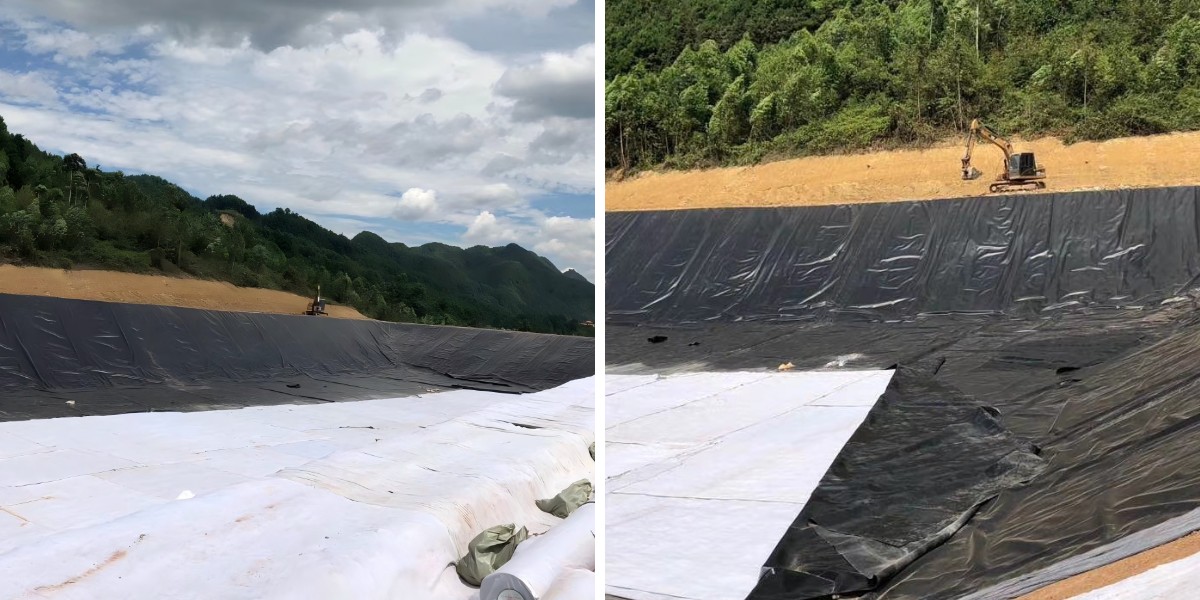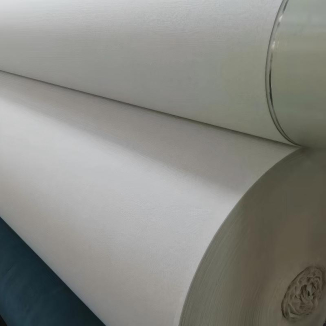What is Geotextile Cloth? A Beginner’s Guide to Types and Uses
If you’ve ever labored on a construction, landscaping, or erosion manipulate project, you may additionally have heard of geotextile cloth—but what precisely is it, and why is it so essential? Geotextile fabric is a artificial or herbal cloth designed to clear up frequent challenges in civil engineering and environmental projects, from stabilizing soil to filtering water. Unlike ordinary fabric, it’s built to stand up to harsh outside conditions, along with UV rays, chemicals, and heavy loads. This information breaks down the fundamentals of geotextile cloth, its key types, and how it’s used, with a center of attention on sensible functions that novices want to know.
What is Geotextile Cloth, and How Does It Work?
At its core, geotextile material is a permeable material engineered to engage with soil, water, and different building materials. Its most important intention is to beautify the overall performance and sturdiness of initiatives by using addressing troubles like soil erosion, terrible drainage, and unstable ground. Unlike regular substances (such as concrete or gravel), geotextile fabric is lightweight, flexible, and effortless to install—making it a go-to preference for each small DIY initiatives and large-scale infrastructure work.
A key section of how geotextile material features is its potential to stability two imperative needs: permeability and strength. It permits water to glide via (preventing pooling that can injury structures) whilst protecting soil particles in place. For example, in a avenue building project, geotextile fabric positioned between the subgrade (the herbal soil) and the gravel base stops first-rate soil from mixing with the gravel—this continues the gravel’s shape intact, making sure the avenue stays steady over time.
Within the broader class of geotextiles, specialised editions like geotextile stabilization material and geotextile filter fabric serve particular roles. Geotextile stabilization material focuses on reinforcing soil to face up to movement, whilst geotextile filter material prioritizes isolating and filtering materials—both construct on the core homes of geotextile fabric however tailor them to special venture needs.
The Main Types of Geotextile Cloth
Not all geotextile fabric is the same—different tasks require special types, every designed with particular properties. The three important classes are woven, non-woven, and knitted geotextiles, every with awesome makes use of and benefits.
1. Woven Geotextile Cloth
Woven geotextile fabric is made by using weaving artificial fibers (like polypropylene or polyester) into a tight, grid-like pattern—similar to how ordinary material is woven. This method creates a strong, long lasting material with excessive tensile strength, making it best for tasks that want reinforcement.
One of the most frequent makes use of for woven geotextile material is in geotextile stabilization cloth applications. For example, in a maintaining wall project, woven geotextile material is wrapped round the backfill (the soil at the back of the wall) to distribute strain evenly. This prevents the wall from moving or collapsing below the weight of the soil. Woven geotextile fabric is additionally used in avenue and railway projects, the place it reinforces the base layer to deal with heavy site visitors loads. Its tight weave capability it’s much less permeable than different types, so it’s fine for tasks the place power is greater crucial than fast drainage.
2. Non-Woven Geotextile Cloth
Non-woven geotextile material is created through bonding artificial fibers collectively (using heat, chemicals, or needles) instead than weaving them. This consequences in a soft, porous material with notable permeability and filtration capabilities. Unlike woven geotextiles, it has no wonderful grid pattern—instead, it has a fuzzy, uniform texture that traps nice particles whilst letting water ignore through.
Non-woven geotextile fabric is frequently used as geotextile filter cloth. For instance, in a French drain (a gadget that redirects groundwater), non-woven geotextile filter material wraps round the drain pipe and gravel. It stops soil, sand, and particles from clogging the pipe whilst permitting water to seep in freely. This kind is additionally famous in landscaping projects, such as underneath pavers or synthetic turf—where it prevents weeds from developing up thru the floor and maintains the base cloth (like sand) from mixing with the soil below. Its flexibility makes it convenient to lay over irregular surfaces, such as sloped yards.
3. Knitted Geotextile Cloth
Knitted geotextile material is the least frequent type, made through knitting fibers into a stretchable, light-weight fabric. It presents accurate elasticity, which makes it appropriate for tasks the place the soil or shape may additionally shift barely over time (like in areas with freeze-thaw cycles). While it’s now not as robust as woven geotextile cloth, its stretchability approves it to adapt to motion barring tearing.
Knitted geotextile material is regularly used in erosion manage initiatives on mild slopes. For example, it can be laid over naked soil in a backyard to stop rainwater from washing away topsoil, whilst nevertheless permitting seeds to germinate and develop via its openings. It’s also used in inexperienced roof projects, the place its flexibility conforms to the roof’s shape, and its permeability ensures extra water drains properly. Though much less frequent than woven or non-woven types, it’s a precious alternative for initiatives that want adaptability.
Common Uses of Geotextile Cloth
Geotextile cloth’s versatility ability it’s used in a vast vary of projects—from development to environmental restoration. Below are the most frequent applications, highlighting how extraordinary sorts (including geotextile stabilization material and geotextile filter cloth) in shape into each.
1. Erosion Control
Erosion is one of the largest threats to outside projects—rainwater and wind can wash away soil, destabilizing slopes, riverbanks, and landscaping. Geotextile material acts as a barrier to gradual down water float and preserve soil in place.
For example, on a sloped yard inclined to erosion, non-woven geotextile material (often used as geotextile filter fabric here) is laid over the soil earlier than including mulch or grass seed. The fabric traps soil particles whilst letting water infiltrate, making sure the seeds take root besides being washed away. On steeper slopes or riverbanks, woven geotextile material (or geotextile stabilization fabric) is used for greater strength—it reinforces the soil to withstand the pressure of jogging water, stopping landslides or financial institution collapse.
2. Road and Pavement Construction
Roads and pavements want a steady base to take care of heavy vehicles. Without ideal reinforcement, the natural soil (subgrade) can compress or shift, main to potholes or cracks. Geotextile material solves this through separating, reinforcing, and filtering substances in the street base.
In avenue construction, geotextile fabric is positioned between the subgrade and the gravel base layer. Woven geotextile fabric (acting as geotextile stabilization fabric) reinforces the gravel, stopping it from sinking into the tender subgrade. At the equal time, it acts as a filter, stopping pleasant soil from mixing with the gravel—this maintains the gravel’s drainage homes intact, so water doesn’t pool beneath the road. Non-woven geotextile material can also additionally be used in smaller projects, like a residential driveway, the place it presents a light-weight however positive barrier between the soil and the asphalt or concrete.
3. Landscaping and Hardscaping
Geotextile fabric is a staple in landscaping and hardscaping (projects involving challenging substances like stone or concrete). It solves frequent problems like weed growth, soil mixing, and negative drainage.
Under pavers (used for patios or walkways), non-woven geotextile filter material is laid between the soil and the sand base. It stops weeds from developing up via the gaps between pavers and prevents the sand from sinking into the soil—this maintains the pavers stage and stable. For synthetic turf projects, geotextile fabric is positioned underneath the turf’s padding to enhance drainage and stop the padding from shifting. In backyard beds, it can be used underneath mulch to suppress weeds whilst letting water and vitamins attain plant roots.
4. Environmental Restoration
Geotextile material performs a key position in restoring broken ecosystems, such as wetlands, riverbanks, or mine sites. Its capability to filter water and stabilize soil makes it best for tasks centered on sustainability.
In wetland restoration, geotextile filter fabric is used to entice sediment in the water, permitting native vegetation to take root. The cloth’s permeability ensures the wetland’s herbal water drift is maintained, whilst its electricity prevents erosion. In mine reclamation (restoring land after mining), geotextile stabilization cloth is laid over the disturbed soil to enhance it earlier than including topsoil and native seeds. This helps the soil recover quicker and prevents poisonous substances from seeping into close by water sources.
How to Choose the Right Geotextile Cloth for Your Project
Choosing the proper geotextile material relies upon on your project’s goals—do you want reinforcement, filtration, or both? Here are easy recommendations for beginners:
For reinforcement (e.g., preserving walls, roads): Choose woven geotextile fabric (or geotextile stabilization fabric). Its excessive tensile power will face up to soil motion and heavy loads.
For filtration (e.g., French drains, below pavers): Opt for non-woven geotextile material (or geotextile filter cloth). Its porous shape will separate substances whilst letting water glide through.
For adaptability (e.g., inexperienced roofs, mild slopes): Consider knitted geotextile cloth. Its stretchability works nicely for tasks the place mild motion is expected.
Also, think about the project’s environment: if it will be uncovered to direct daylight for years, pick out a geotextile material dealt with with UV inhibitors to forestall degradation. For initiatives in moist areas (like riverbanks), make certain the fabric is resistant to mould and mildew.
Conclusion
Geotextile material is a versatile, comparatively cheap answer for limitless outside and building projects. Whether you’re stabilizing a slope with geotextile stabilization fabric, filtering water with geotextile filter cloth, or stopping weeds in a garden, appreciation its sorts and makes use of is key to success. By selecting the proper kind for your project—woven for strength, non-woven for filtration, or knitted for adaptability—you can make certain your work is stable, durable, and long-lasting.
For beginners, geotextile fabric eliminates lots of the guesswork from initiatives like avenue building, landscaping, or erosion control. It’s effortless to install, works with herbal materials, and solves frequent troubles that would in any other case lead to high priced repairs. Whether you’re a DIY fanatic or a expert simply beginning out, geotextile material is a device that will rapidly turn out to be vital in your projects.
Contact Us
Company Name: Shandong Chuangwei New Materials Co., LTD
Contact Person :Jaden Sylvan
Contact Number :+86 19305485668
WhatsApp:+86 19305485668
Enterprise Email: cggeosynthetics@gmail.com
Enterprise Address: Entrepreneurship Park, Dayue District, Tai 'an City,
Shandong Province









